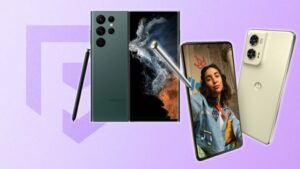The smartphone stylus, once a niche accessory, has emerged as a vital tool for both creativity and productivity in the modern digital landscape. This small, pen-like device is designed to interact with touchscreens, offering precision and functionality that fingers often cannot achieve. Over the years, the stylus has undergone significant evolution, becoming a must-have for artists, professionals, and everyday users alike.

The Evolution of the Smartphone Stylus
The journey of the smartphone stylus began in the early days of touchscreen devices. Initially, styluses were simple plastic sticks used to navigate resistive touchscreens, which required pressure to register input. These early styluses lacked sophistication, offering limited functionality and a clunky user experience.
With the advent of capacitive touchscreens, which respond to electrical conductivity rather than pressure, the stylus underwent a transformation. Modern styluses, such as the Samsung S Pen and Apple Pencil, incorporate advanced technology, including pressure sensitivity, tilt recognition, and palm rejection. These features enable users to draw, write, and navigate with unprecedented accuracy and fluidity.
Stylus Features That Enhance User Experience
Modern smartphone styluses come packed with features that cater to a wide range of needs:
- Pressure Sensitivity: This feature allows users to create lines of varying thickness and opacity, making the stylus ideal for digital artists.
- Tilt Recognition: By detecting the angle of the stylus, devices can simulate shading and other effects, mimicking traditional art tools.
- Palm Rejection: This ensures that the device only registers input from the stylus, ignoring accidental touches from the user’s hand.
- Shortcut Buttons: Many styluses include customizable buttons for quick access to functions like erasing or selecting tools.
- Wireless Connectivity: Advanced styluses can connect via Bluetooth, enabling additional features such as remote control for presentations or camera shutters.
Applications in Creativity
The stylus has revolutionized creative fields by providing artists and designers with a versatile and portable tool. Digital art apps like Procreate, Adobe Fresco, and Autodesk SketchBook are optimized for stylus use, offering features such as brush customization and layer management. These tools allow artists to create detailed illustrations, animations, and graphic designs directly on their smartphones.
Photographers and videographers also benefit from styluses. They can use these tools for precise photo editing, color grading, and retouching, transforming their smartphones into portable creative studios.
Enhancing Productivity
Beyond the realm of creativity, the stylus serves as a powerful productivity tool. Note-taking apps like Microsoft OneNote, Evernote, and Samsung Notes enable users to jot down ideas, annotate documents, and organize thoughts seamlessly. The ability to handwrite notes and convert them into text bridges the gap between traditional and digital workflows.
For professionals, styluses enhance tasks such as signing documents, creating diagrams, and editing spreadsheets. Architects, engineers, and educators find styluses particularly useful for sketching blueprints, solving equations, and delivering interactive lessons.
Accessibility and Inclusivity
The stylus also plays a crucial role in making technology more accessible. For individuals with motor impairments, a stylus can provide a more precise and comfortable way to interact with touchscreens. Moreover, the ability to customize stylus settings ensures that it can cater to diverse needs and preferences.
The Future of Smartphone Styluses
As technology continues to advance, the potential of the smartphone stylus is expanding. Innovations such as haptic feedback, AI-assisted features, and enhanced durability are on the horizon. Future styluses may incorporate biometric sensors for added security or even support augmented reality (AR) interactions.
The integration of AI could further elevate the stylus experience. For instance, AI-powered predictive text and shape recognition could make handwriting and drawing more intuitive. Additionally, eco-friendly materials and sustainable production methods are likely to shape the next generation of styluses.
Choosing the Right Stylus
With a plethora of options available, selecting the right stylus depends on individual needs and preferences. Key factors to consider include compatibility, features, and budget. For instance, the Samsung S Pen is tailored for Galaxy devices, offering deep integration with Samsung’s ecosystem, while the Apple Pencil is designed for iPads and iPhones.
Third-party styluses, such as those from Wacom and Adonit, provide alternatives for users seeking specific features or broader compatibility. Testing different styluses and exploring user reviews can help in making an informed decision.
Conclusion
The smartphone stylus is more than just a tool; it is a gateway to enhanced creativity, productivity, and accessibility. From sketching masterpieces to streamlining professional tasks, the stylus has become an indispensable accessory for many. As technology continues to evolve, the stylus is poised to play an even greater role in shaping the way we interact with our devices and express our ideas.
Whether you are an artist, a professional, or a tech enthusiast, the stylus offers a world of possibilities at your fingertips. Its ability to transform smartphones into versatile, precision-driven tools underscores its importance in the digital age. Embracing this small yet powerful device can unlock new levels of efficiency and innovation in both personal and professional endeavors.